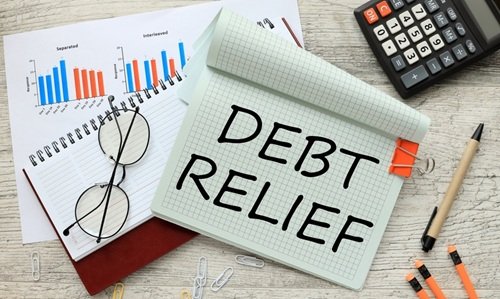When it comes to getting out of debt, it’s easy to feel overwhelmed. Bills pile up, interest grows, and sometimes the whole situation feels impossible to untangle. Some people turn to options like bankruptcy debt relief when things get too heavy to manage. While that can be a necessary step for some, there are also proactive strategies anyone can use to take control before things reach that point. One of the most effective is setting SMART goals. This framework doesn’t just give you a plan—it gives you focus, clarity, and motivation to keep moving forward.
Debt relief isn’t about wishing for a windfall or hoping you’ll magically get better at money overnight. It’s about creating small, intentional steps that add up over time. SMART goals give structure to those steps so you can track progress and celebrate wins along the way.

Why Structure Matters in Debt Relief
Debt can feel like a never-ending spiral, but much of that stress comes from not having a clear plan. When your approach is vague—like saying, “I want to be debt-free someday”—it leaves too much room for frustration. Structure turns wishful thinking into a roadmap. SMART goals give you that structureby breaking debt relief into manageable milestones. Instead of being paralyzed by the big picture, you focus on what’s in front of you. Structure is what transforms debt relief from an abstract hope into a process you can actually manage.
Specific: Defining the Target Clearly
General goals are easy to abandon. A specific goal forces you to name exactly what you’re aiming for. Instead of saying, “I want to pay off debt,” you might say, “I will pay off my $1,200 credit card balance.” The specificity removes ambiguity. You know the exact debt, the balance, and the focus. This clarity eliminates the fog and gives your efforts a clear direction. The more specific you are, the easier it becomes to design steps to reach your target.
Measurable: Tracking Real Progress
One of the biggest frustrations in debt relief is feeling like you’re working hard but not seeing results. That’s why measurable goals are essential. If you decide to pay $100 toward your balance each month, you’ll know after three months that you’ve reduced it by $300. Progress you can measure creates motivation. It turns effort into visible change. Measurable goals make you accountable to yourself and let you celebrate milestones, no matter how small they seem at first.
Achievable: Staying Realistic With Ambition
It’s natural to want debt gone as quickly as possible, but unrealistic goals can set you up for disappointment. An achievable goal is one that stretches you without breaking you. If your budget only allows $200 a month toward debt, aiming for $500 is likely to fail and leave you discouraged. Achievability doesn’t mean settling for less—it means respecting your current reality and building from there. Over time, as your situation improves, you can adjust and push further. Achievable goals help you sustain momentum instead of burning out.
Relevant: Connecting Goals to What Matters Most
Relevance is about linking your debt relief goals to your bigger picture. Why do you want to pay off your debt? Maybe it’s to free up money for your child’s education, reduce stress in your marriage, or save for a home. When your goals connect to values that truly matter, they become more powerful. Paying off a loan isn’t just about the numbers—it’s about building the life you want. Keeping your bigger purpose in mind helps you stay committed during tough moments.
Time-bound: Creating Urgency Without Pressure
Without a timeline, even the best intentions drift. A time-bound goal sets a deadline that creates urgency. Instead of saying, “I’ll pay this debt off eventually,” you might commit to paying it off within 12 months. Deadlines create structure, but they don’t have to be harsh. A flexible time frame is better than no time frame at all. The point isn’t to create pressure—it’s to build momentum and give yourself checkpoints to adjust along the way.
Using SMART Goals Together
The real power of SMART goals comes when you put them all together. A vague goal like, “I want less debt,” becomes: “I will pay off my $1,200 credit card by making $100 monthly payments, finishing in 12 months. This will free up money to save for a family trip.” Suddenly, you have clarity, measurable steps, realistic expectations, personal relevance, and a timeline. It transforms a foggy wish into a practical plan you can follow with confidence.
The Emotional Side of SMART Goals
Debt relief is as much emotional as it is financial. SMART goals don’t just organize your money—they also reduce stress. Every time you check off a milestone, you build confidence. You prove to yourself that you can take control, even in situations that once felt impossible. That emotional lift carries over into other parts of life, making you feel more capable and resilient overall.
Taking the First Step
Applying SMART goals to debt relief doesn’t require perfection. It just requires starting. Pick one debt, define a specific goal around it, and create a plan that checks all the SMART boxes. Even if your progress feels slow at first, remember that steady progress beats no progress. Over time, those small, focused steps build momentum. And eventually, they can carry you out of debt and into a more stable, confident future.

Our dedicated team gathers information from all the reliable sources to make the law accessible and understandable for everyone. We provide the latest legal news stories from across the country, delivered straight to you.
